British F-35B Lightning jets have launched from HMS Prince of Wales off the coast of Australia during a key phase of Exercise Talisman Sabre 25, showcasing UK carrier air power in the Indo-Pacific.
The stealth fighters launched into the evening sky on 9 July during flight operations ahead of full integration into the multinational exercise, which is being hosted across vast stretches of Australia’s northern and eastern coastlines.
An F-35B launches at sunrise from HMS Prince of Wales off the Australian coast during flying ops for #TalismanSabre25 part of the Royal Navy’s global #CSG25 deployment. 📷 AS1 Amber Mayall RAF, Crown Copyright 2025. pic.twitter.com/v6l9VQnagD
— UK Defence Journal (@UKDefJournal) July 18, 2025
Talisman Sabre 25 is the largest iteration of the Australian-US led exercise to date, involving over 35,000 personnel from 19 nations. It also represents the high point of Operation Highmast, the Royal Navy’s flagship deployment of 2025, led by Carrier Strike Group 25 (CSG25).
Prince of Wales is joined by her escorts HMS Richmond and HMS Dauntless, with logistics support provided by RFA Tidespring. The task group has sailed to the Indo-Pacific via the Mediterranean and Middle East and will continue to operate across the western Pacific Rim.
The carrier’s embarked air wing includes the fifth-generation F-35Bs, as well as Merlin and Wildcat helicopters. Their presence at Talisman Sabre underscores Britain’s operational reach and commitment to regional security.
This year’s exercise features combined operations between British forces, US Marines, the Australian Defence Force, and others, with scenarios ranging from amphibious assaults to complex air integration. For the first time, offshore activities are also taking place in Papua New Guinea.
Over 3,000 UK personnel are taking part, including Royal Marines Commandos and elements of the British Army and Royal Air Force. The scale and complexity of Talisman Sabre make it a defining moment in the UK’s Indo-Pacific engagement this decade.
HMS Prince of Wales
HMS Prince of Wales is the second of the Royal Navy’s Queen Elizabeth-class aircraft carriers and serves as the current Fleet Flagship. Commissioned on 10 December 2019, she was constructed at Rosyth Dockyard, launched in December 2017, and delivered to the Royal Navy in 2019. The vessel began sea trials in September 2019 and arrived at her homeport, HMNB Portsmouth, in November that year.
Her commissioning ceremony coincided with the 78th anniversary of the sinking of the World War II battleship of the same name. Under the command of Captain Will Blackett since 2024, HMS Prince of Wales is one of the largest warships ever built for the Royal Navy.
The carrier displaces approximately 70,600 tonnes, measures 284 metres in length, and has a draught of 11 metres. She is designed around a Short Take-Off and Vertical Landing (STOVL) aviation model, lacking catapults or arrestor wires. The air wing is currently planned to comprise up to 48 F-35B Lightning II aircraft and Merlin helicopters for airborne early warning and anti-submarine warfare.
The flight deck includes two aircraft lifts, a ski-jump ramp, and facilities for refuelling and rearming. Below deck, the ship features a hangar and 9 internal decks, supporting a total embarked force of up to 1,600 personnel, including 250 Royal Marines.
HMS Prince of Wales is equipped with a range of modern sensors and self-defence systems, including the S1850M long-range radar, Type 997 Artisan 3D radar, and Phalanx CIWS for close-in threats. The ship carries Sea-class workboats and Pacific 24 RIBs for operational support and boarding operations. Designed with flexibility in mind, she can operate a range of rotary-wing platforms such as Chinook, Apache, Merlin, and Wildcat helicopters, and accommodates large-scale amphibious operations.
The ship is powered for speeds in excess of 25 knots and has an operational range of 10,000 nautical miles, enabling sustained deployments such as the current 2025 Carrier Strike Group mission, Operation HIGHMAST.


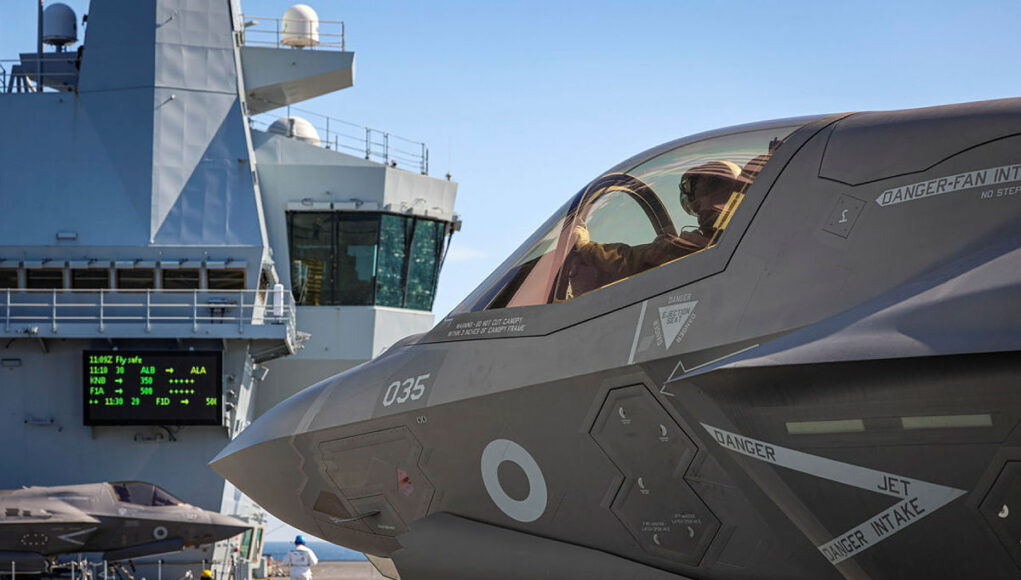
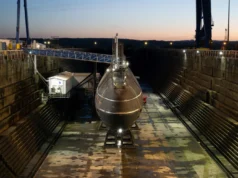
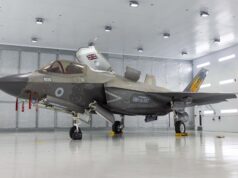
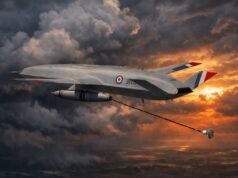

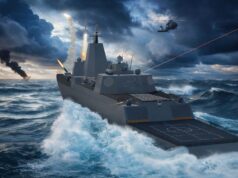
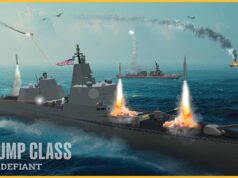
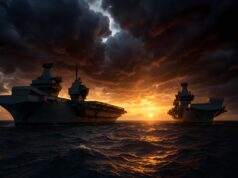
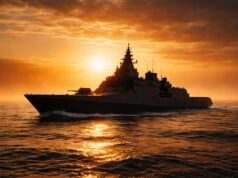



“The air wing is comprised of 48 F35B…”? Errr no I dont think so matey….
Yeah but no but.
That’s a full load theoretically, (in times of danger) it’s what the UK tax payer spent on her design and envisaged use (in times of danger) all those (many many) years back.
But we only need 14 so we have saved a bastid fortune on F35’s, infact they are so good, we can even reduce the order and swap for some N capable (non carrier capable- non re-fueling capable) ones.
Diane Abbot did her sums well !
No, full load was designed to be 36 jets plus helicopters.
I know.
That’s why I wrote “(in times of danger) Twice, because that’s the sort of load they were designed to carry (in times of danger).
Hope that clears up any confusion.
There was even talk of up to 70 combined aircraft (in times of danger).
Got to go, my Chicken Phall has just arrived.
A Phall!!!! Lol. I saw a mate eat one of those once, it did not end well. Or start well for that matter.
Incorrect. Max capacity is 36 jets plus helos.
Wrong, that’s the Full load designed for normal use. You seem to not understand the difference (despite my many attempts to explain) that “In times of danger” she can carry in excess of that. If you require further help then I suggest you take a search on google to see what HMS Hermes took south.
“You can lead a horse to water”.
Explain exactly what you class as “in times of danger”. So we can cross check what you’ve copied from Wikipedia. 😉 It will be a long time before we see 36 F35Bs onboard. let alone 40+. But hey, no need to fall out over it..
Hello Robert, what argument do you want to have with me about this ? is it something I have said that is actually wrong ? Wiki was a suggestion to Grinch as he seemed to have no Idea what happens “In times of danger” (I haven’t had to look it up or copy anything as you wrongly say) neither do you it seems. Just to educate you Hermes took way more aircraft of all types than she was ever designed for on her way to the FI’s way back in 1982, It was “A time of danger” and that’s exactly what I have said here time and time again. If you read what others have said here, you’ll see that the 36 figure is merely the intended max operating load in normal ie, not “in times of danger”. I’m really surprised you want an argument about that.
Oh well I guess you’re stuck in your ways, no chance you’ll want to change them now.
Wiki is a great place to check what I said here, if you want.
The CVF (QE & PoW) designers (lead by Simon Knight), the builders (Future Carrier Alliance), the Royal Navy, and the Ministry of Defence, have all been 100% consistent since day one that the maximum F-35B’s that can be surged to the carriers is 36.
Those aircraft have a theoretical limit of 72 missions a day operating from the carriers (i.e. 2 per aircraft) for a few days. Some less that smart folks (including some in the RN) have interpreted that as meaning the carriers can carry 72 aircraft. They can’t.
And then there’s @halfwit who, without any credible source, is claiming that the carriers can surge to 48.
He’s flat wrong.
I remember munching a phall. 1977 fireman’s strike,in Coventry. 6pints later sweat glands shut down, gob lost all feeling, don’t even mention the shit valve.FUBAR.🇬🇧🕳️🙃 btth.
Ha, It’s a bit hot but I’m used to it. Got a great local that knows how to make them just how I like them.
Best bit is I don’t have to wait for it to fly over from India !
I think you’re right re max load,when the normal rules no longer apply. Such as war.
In 82 things happened in weeks, stuff materialises from nothing. Things get done.
I too have read of the 72 many times, all the way back to before the Carriers got built.
Daniele, yes, I’m only saying what I know to be true having keenly followed the whole carrier design and build program since the beginning and even going back to the cancelled CVA-01.
As per normal, some people just can’t read stuff properly, get all aggie and then can’t be persuaded that they are simply wrong. (still banging on about it though).
“That’s life”.
Had cold Phall for breakfast too !
@halfwit
If your claim to have followed CVF since the beginning were true, you would know your claim of 48 F-35B to be totally bogus.
Be a man and do some reading of credible sources on the subject then come back and admit that you’re wrong.
Bit of confusion going on here. Captain Jerry Kyd stated QE Class would carry 36 jets in surge conditions, however, capable in theory of carrying 70 aircraft in total.
“Overview
What kind of aircraft and how many of them will HMS Queen …
Captain Jerry Kyd stated that the Queen Elizabeth-class aircraft carrier can accommodate a maximum of 70 F-35Bs under surge conditions, but this is a theoretical capacity and not a typical operational load. The ships are designed to operate with a Carrier Air Wing (CVW) of about 40 aircraft, with a peacetime standard of 12 to 24 F-35Bs and a combat surge capability of around 36 F-35Bs, plus helicopters.”
While the full-load complement of F-35Bs is 36 aircraft, the CVF design has an ‘overload’ capacity far greater than this. While I recall, I believe during the build, comments in to the effect of 72 (apologies no references), I would doubt when looking at the present hanger space and deck layout.
.
.
With little (literal) wiggle room, a carrier wing of 48 jet and a ‘couple’ of rotary aircraft is possible, noting however the main constraints to this carrier wing complement are:
– The current force level of F-35Bs.
– The UK public. Sea-blind and ignorant of their military history and needs.
– The MoD. Idiots.
– The government. Mix of above.
– The light-blue. As above.
– RN personnel levels & leadership. Not enough balls to go around to lead the above as the UK’s senior military service.
– The magazine spaces for weapons (note again there is always greater capacity in a wartime configuration).
– The lack of RFA vessels to support regular refuelling and ammunitioning RAS’, now and in any future wartime scenarios.
Thanks, I was beginning to think I’d imagined it all !
36 was the (settled on figure) with various other numbers mentioned in the earlier stages.
36 was, and is, described as the “surged” total.
That’s what I recall as well.
72 aircraft if normal rules chucked, so war.
Though Grinch has me doubting now, not the 72, but what 72 represented…
The air wing is currently planned to comprise UP TO 48 F-35B Lightning II aircraft (to be fair)
Actually you could probably squeeze a few more on POW from other nations – or indeed future UK purchases.
I remember what Hermes took South (in that time of danger).
Incorrect. Max capacity is 36 jets plus helos.
You seem to have issues with facts, figures and capabilities even when others have corrected you.
Oh well, never mind.
And you seem to have issues backing up your claims with any reference to credible sources.
Could it be, you don’t have any?
It is always the way when commenters think a few quick links is their (world of) knowledge and the facts.
.
.
Digital cerebral ignorance.
Charming.
Can we just times 36 by the 2 carriers which gives us 72 and we can all be happy!?
Carry On 🇬🇧 🚢…lol.
Can we just times 36 by the 2 carriers which gives us 72 and we can all be happy!?
Carry On 🇬🇧 🚢…lol.
Up to. Did not say comprises.
Up to 48 F-35B. Better buy some more then..!
Fat chance…
Although, to be fair to the MoD one really has to question the utility of an aircraft whose sole offensive capability is a laser guided bomb with a range of a few tens of km. LM really need to sort out the weapons integration issues. Its not just export customers who are being hamstrung in this way, reportedly the USAF, USN and USMC are also unhappy with progress. Someone needs to have a serious word with LM it seems.
Cheer CR
I’ll back you up mate.
To be fair CR offensive capabilities are likely to be enhanced by UAVs in the coming years which should enhance POWs strike capabilities.
Hi Mark B,
Agreed. In fact I have stated a couple of time elsewhere on UKDJ that we could get around the F-35B weapons carrying limitations and simply develop our own autonomous vehicle (AV) integrating our weapons onto it and simply giving up on LM… Given the F-35B’s ISTAR and intel capabilities, not to mention huge cost and reportedly poor(ish) availability rates, going this way might be the most cost effective long term approach to solving current and future challenges.
You could imagine an airwing of 12 F-35B configured to control and direct 24 AV’s able to carry the full range soft kill suppression and hard kill weapons systems replacing the current 24 to 36 F-35B. We would have complete control of the main strike payloads that are integrated on to the AV’s. The F-35B could keep ASRAAM and AMRAAM as last ditch defensive systems.
By the way I would lump Meteor as a ‘strike’ weapon given it’s range and potential for dealing to high value air assets, so put it on the AV’s…
I would also make damn sure the AV program was UK only or strongly led by the UK such that we had the power and freedom to apply spiral development to the AV system to meet our needs, when we chose, with the power to give any contractor a serious prod in the ribs with the sharpest of sticks if we needed to. Given the costs of these complex systems it is the least we should aim for.
Cheers CR
Totally agree.
Incorrect as I’ve noted above.
Hi Grinch,
That was an of the cuff remark written before the exchanges above. I was basically alluding to the fact that we will probably never ever buy enough aircraft to reach that number. We all know that we only have 48 aircraft anyway and even if you could surge the lot onto the carrier in an emergency it would be madness to do so as you are putting your entire force into harms way in one basket, effectively risking it’s total destruction if the carrier were to be sunk. Force regeneration in any meaningful timeframe would be virtually impossible…
Cheers CR
I would also point out that in times of extreme danger or need strange and hair brained schemes are often tried, for example, the Doolittle Raid 18 April 1942 from USS Hornet a carrier never intended to carry a twin engined medium bomb was load up with 16 B-25 Mitchell bombers.
Not withstanding my point above about our F-35B force size, I would say that going on published information 36 is the current envisioned maximum, but… only wartime will tell and lets hope it never ever comes to that.
Cheers CR
A google search for “Up to 48 F-35B” returns only references the number of F-35B’s orders by the UK in batch 1.
I suspect this is where you folks have got your numbers mixed up:
48 F-35B is the number of aircraft ordered by the UK to date.
36 is the maximum surged loadout of each carrier
72 is the designed number of missions they can fly per day although obviously, other factors can play into this. But fuel, weapons storage and personnel accommodation are sized to support this number.
And a Google search “Queen Elizabeth Carrier 72 aircraft” which i just tried gives several hits at 73 aircraft in extremis, so war with normal capacity discarded. Which is what I recalled and what I think HW was on about.
Including the RN own website which also mentions 72 Aircraft as a max load, not sorties.
36 F35B max. 48 if normal rules are discarded.
Whatever, it’s hopefully never going to happen and without extra Chinook Wildcat and CHF Merlin joining we lack the numbers.
Sorry Daniele, I’ve just scrolled down and you’ve said the same thing earlier.
Hello mate. You have no reason to apologise.
An aircrafts capability is not solely based on the munitions It can deploy. Especially the F35. Its an ISTAR asset. Air superiority fighter. And those Paveway 4s give it the ability to hit targets in any weather, night or day, fixed or moving. 6 in one pass to 6 different targets. Stand off will certainly bring more options. But you won’t find a more capable warfighting machine in service.
With so few, It might be difficult to find one at all.
600 F35s operating across Europe by 2030. We’ll be just fine.
It was Humour/sarcasm.
lighten up man.
“British Lightning strikes off Australia”
What with?
Can we please stop having a dig at the carriers. For the investment they will be a good return. Would I like to see 48 F35Bs on board now, yes; but only if they are fully operational. The last thing we need is to buy lots of aircraft that cannot be upgraded to the latest version.
Also if memory serves me correctly the QEs are designed to take 72 aircraft fast jet/helicopter mix. To be honest I would be happy with a air wing of 36 F35Bs, 6 Sea Guardians ASW, 6 Sky Guardians AEW, 4 Apaches, 2 Wildcats and 6 Merlins. The Guardians would be better if they came with folding wings. If we could get an E-MAL lite then 6 MQ-25s. A total of 66 airframes. A possibility of 4 COD aircraft such as the Beta Technologies eCTOL. Yes it’s a new aircraft but it has done over 400 test flights and tested in the field with the US military, it can come either in the manned or unmanned versions, hybrid power or electric power with a 1 hour recharge time. it comes in either STOL or VTOL version. This air wing would give the RN a powerful strike group without breaking the bank.
Where is this silly nonsense about 48 jets on one carrier coming from? Is it mass hysteria?
Let alone 72!!!!
Well I guess you just don’t understand and it seems, never will.
I guess you can cheerfully discard all the evidence and come up with a number pulled out of thin air.
You might have credibility if you were a naval architect, or someone who works on the carriers or even someone who has served on them.
But I really don’t think you are.
Well it just goes to show,
“You can’t educate Pork”.
It’s OK, you win,
Even this Halfwit recognises his equal. 😁
Seeing that you have not once said where you obtained the 48 figure from but instead have huffed and puffed up and down this page like an old leaky steam train, I’d say you’ve done nothing to educate anybody let alone me.
I think I’ll leave you to your gin and tonics and dreams of RN capacity.
Copy/paste from Wikipedia: “The carrier air wing (CVW) will vary depending on the type and location of deployment, but will consist of 12-24 F-35Bs under in peacetime and 36 in a conflict scenario (with up to 48 in extreme cases)”.. source cited as House of Commons, committee of public accounts(report).
Yes.
And add helicopters.
72 aircraft maximum.
And yet the House of Commons report (including appendices) that Wikipedia quotes as the source for the claim of 48, does not mention anywhere what the capacity of the carries is or the composition of its air wing.
But that’s Wikipedia for you.
Yes, it is often unreliable.
Do you think the RN website is also taken from Wiki?
Maybe they’re all wrong.
You mentioned sources.
I’m intrigued, as if you’re right and so many sites on Google are wrong that’s quite something.
Which is the most reliable online source that would top all others? ,
I’ll take a look.
lighten up man. Why so serious…
Practice what you now preach Robert, good to see your new found understanding.
Hope to engage in some humour with you from now on.
After a moment of doubt over Grinch 72 sorties comment, I looked on wiki.
A link to the RN own website on QEC clearly states….max 72 aircraft.
As I recalled.
In extremis. In war. When shit has gone down and normal rules are discarded. As you said.
Debate over for me.
Yep, no mistakes on the RN website, no sirree (eyes roll)
As I said to you further up ( which i see you ignored )
There are plenty of refs to the 72 number if you do a Google.
Maybe they’re all wrong and the RN copied everyone else?
Or maybe in fact you are.
What were you saying to halfwit?
“Be a man”
( eyes roll )
You were asking him to quote sources so I thought I’d do a Google. Lots of 72 hits.
So you’re saying they’re all incorrect and you’re right.
Ok!
I’m moving on.
So @halfwit says 48 and you say 72. Quite a bit of difference there.
Total number of aircraft. Not F35.
Having operated on both flightdecks and hangars, fixed wing and rotary, the operational pressure on the deck and maintenance and flying crew is great. Multiply to 48,then to 72,(war footing) serious problems will occur,even dare I say, with a highly professionally trained crew. Remember war watches are 4 about.🇬🇧🛫 Fly Navy.
Not sure why you are having such a fit and arguing this so much. In the falklands war the normal aircraft and carrier health and safety rules were discarded and the number of harriers on board surged to allow war time replacements under fire.
It doesnt mean you can use every aircraft at once but it means you have capacity to take losses